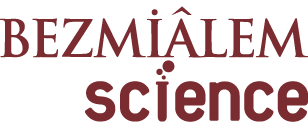ÖZET
Sonuç:
Sonuç olarak, beslenme alışkanlıklarındaki değişimin ve BKİ düzeyinin normal sınırlara getirilmesinin GÖR oluşumunu azaltacağı kanaatine varılmıştır.
Bulgular:
Hasta ve kontrol grubunun %49’u erkek ve %51’i kadındır. Hastalık tanısı alanların sıklıkla pirozis ve asit regürjitasyonu yaşadıkları belirlenmiştir. GÖRH tanısı konulan bireylerin beden kitle indeksi (BKİ) ortalamasının 30,40 kg/m2, kontrol grubundaki bireylerin BKİ ortalamasının 25,41 kg/m2 olduğu tespit edilmiştir (p<0,05). Bu çalışmada bireylerin beslenme alışkanlıkları değerlendirilmiş ve öğün sayısı, öğün atlama durumu, yemek yeme hızları, yemek ısıları açısından istatistiksel olarak anlamlı farklılıklar bulunmuştur. GÖRH semptomları yaşayan bireylerin büyük çoğunluğunun reflüjenik besinler olan çikolata, yağlı besinler, asitli besinler, baharatlar ve kolalı içecekleri kontrol grubuna göre daha çok tükettikleri saptanmıştır. GÖRH tanısı alan bireylerin çoğunluğunun fazla kilolu olduğu, fiziksel aktivitelerinin kontrol grubuna göre anlamlı derecede düşük olduğu tespit edilmiştir (p<0,05).
Yöntemler:
Bu çalışmada İstanbul’da bir eğitim ve araştırma hastanesinde gastroenteroloji polikliniğine Haziran-Aralık 2019 tarihleri arasında başvuran hastalardan GÖRH tanısı alan, yaşları 18-65 arasında değişen 104 hasta ve kontrol grubu olarak GÖRH tanısı almayan 104 birey seçilmiştir.
Amaç:
Gastroözofageal reflü (GÖR), mide içeriğinin özefagusun alt kısmına doğru hareketi olup normalde günde 10-15 kez gözlenebilen fizyolojik bir olaydır. Bu durum yemekten sonra ve uyku sırasında oluşabilmektedir. Bu çalışma GÖR hastalığı (GÖRH) tanısı almış hastaların beslenme davranışının araştırılması amacıyla yapılmıştır.



